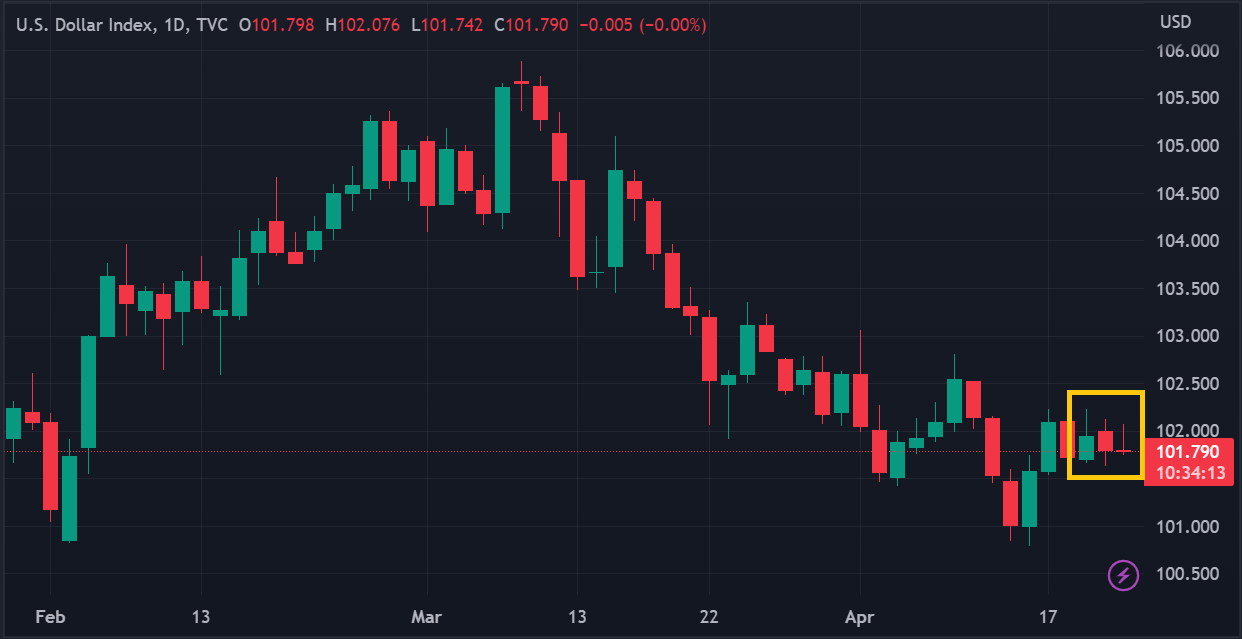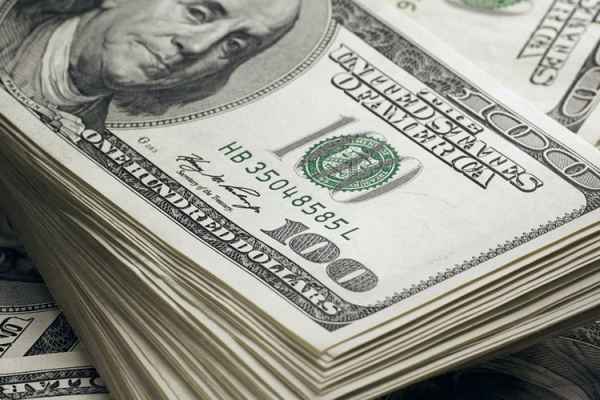Recent US economic data points consistently show a downturn, indicating a deteriorating situation faster than the market's expectations.
The US dollar (DXY) weakened to below 102.00 in Friday's (April 21) trading amid a flood of negative data from the United States. The greenback's performance was mixed against major currency pairs.
The global risk-off sentiment targeted AUD/USD, NZD/USD, and GBP/USD. EUR/USD rose slightly thanks to an improved economic outlook for the Eurozone, while USD/JPY was pressured after the release of Japanese inflation data.
 DXY Daily chart via TradingView
DXY Daily chart via TradingView
Statements from several Fed officials this week have reiterated the central bank's intention to raise interest rates by 25 basis points next month. They believe inflation is too high, so monetary policy must be tightened.
"In order to put inflation on a sustained downward trajectory to 2%, I anticipate that monetary policy will need to move somewhat further into restrictive territory this year, with the fed funds rate moving above 5% and the real fed funds rate staying in positive territory for some time," Loretta Mester said, referring to the central bank's benchmark overnight interest rate.
The hawkish statements from some Fed officials this week seem to have failed to lift the US dollar, as the threat of a recession looms over the country. Several recent economic data points have been disappointing, indicating that the situation is deteriorating faster than market expectations.
Last week's jobless claims report showed an increase of 245k, worse than the consensus estimate of 240k. Existing home sales data for March also came in at -2.4%, while the consensus expected growth of +5.0%.
The Philly Fed Manufacturing Index dropped from -23.2 to -31.3, far below the consensus estimate of -19.2. All components of the manufacturing index performed negatively, despite a few improvements.
These data points suggest that if the Fed goes ahead with a rate hike in May, it will likely be the last one in this tightening cycle. In fact, the market is already factoring in a cut in interest rates starting in July.
The next thing market participants will be watching is the release of S&P's Purchasing Managers' Index (PMI) survey results by S&P tonight. The consensus is for a moderate slowdown, but some market players are concerned that actual figures may fall short of these estimates.

 Dedicated FREE FOREX VPS
Dedicated FREE FOREX VPS Free FOREX Virtual Private Server
Free FOREX Virtual Private Server MT4 Demo Contest, Get $500
MT4 Demo Contest, Get $500 Sign Up for an Account, Claim 60% Deposit Bonus
Sign Up for an Account, Claim 60% Deposit Bonus Free MT4/MT5 VPS 2024
Free MT4/MT5 VPS 2024 Send E-mail and Get Free Merchandise
Send E-mail and Get Free Merchandise $1K Refer a Friend Bonus for Pepperstone Pro clients
$1K Refer a Friend Bonus for Pepperstone Pro clients Maximize Your Earnings with 100% Deposit bonus
Maximize Your Earnings with 100% Deposit bonus Trade to Win, $5,000 Monthly Demo Contest
Trade to Win, $5,000 Monthly Demo Contest Claim 30% + 15% Deposit Bonus from LiteFinance
Claim 30% + 15% Deposit Bonus from LiteFinance






